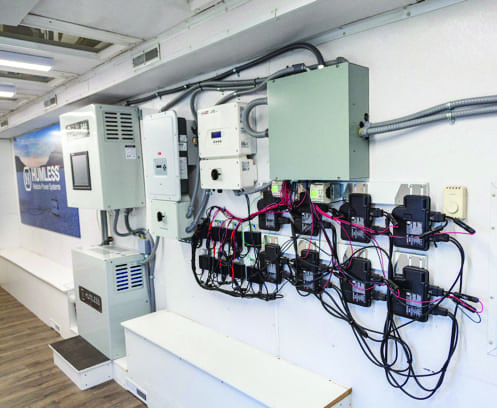BACNet Protocol Can Change Energy Storage Industry
The growth of the energy storage industry in the past few years has been huge, and the sector is expected to add another 2 GW of capacity in 2020. In many ways, energy storage solutions (ESS) are at the forefront of technology, evolving to adapt to the needs of both residential and commercial markets eager for more energy independence in situations with increasingly unreliable utility power. In one crucial way, however, energy storage lags behind the standard found in many other building innovations—integration with BACNet.

The BACNet (building automation and control network) protocol, conceived in 1987, was quickly adopted as an inexpensive, efficient way to marry building technologies and achieve maximum interoperability. Uniquely suited to building automation, BACNet uses a simple input/output language to streamline communication between objects. This allows devices to share data even when they perform different functions or are from different vendors. Since the beginnings of the BACNet protocol, the need for a standard in communication has only grown with the variety of smart technologies available. The energy storage industry has been slow to integrate with BACNet, but it is certainly capable of doing so, and moving in that direction is crucial for continued strong growth. The following are just a few of the ways BACNet can have a positive impact.
 |
|
1. The BACNet (building automation and control network) protocol uses a simple input/output language to streamline communication between objects. This allows devices to share data even when they perform different functions or are from different vendors. Humless has integrated BACNet with all its energy storage technology. Courtesy: Humless |
Accurate Measurement of Energy Use. Perhaps most intriguing to the ESS industry is the idea that BACNet (Figure 1) can greatly improve the measurement of energy used. The idea behind the protocol is to get devices all speaking the same language. Measurements across all devices that are tied to the network can flow to a single point, allowing for comparisons of usage in various locations, at different times and by different users. More data can always help users make better decisions. Precise energy measurements are already used in other utilities to cut costs, and learning more about the way energy is stored and cycled will help lead to further innovation.
Remaining Relevant in the Power Industry. The heating, ventilation, and air conditioning (HVAC) industry has long used motion sensors and thermostats to keep waste to a minimum—it’s important that the energy storage industry keep up. There will always be a need for storage cells, but how can users ensure devices aren’t functioning when they aren’t needed? Further, how can resources be allocated in the most efficient way possible so that the energy is there when it is needed? BACNet helps answer these questions and solves a need, making it a natural next step for consumers looking to improve their grid.
Reduced Material Costs. Utilizing the protocol allows the same wiring to work for a variety of systems, cutting down on the raw materials needed in a project. For homes, the savings may be minimal (but still there), but in large commercial projects, the copper, plastics, ceramics, and other materials can cost millions of dollars. Cutting back on material costs would undoubtedly be the difference between a winning and losing bid. Reduced production is also better for the environment, a big selling point in the clean energy business.
BACNet Goes Further Than Smart Technology on Its Own. Smart systems utilize things like motion sensors to give machines ways to manage themselves. BACNet is the equivalent of adding a variety of other senses to a single system. So, instead of just motion, it can integrate with temperature, time of day, or other useful inputs. Using BacNet adds another layer to smart tech, improving the ways storage can be used to better the devices in homes and commercial properties.
The Industry Is Moving Toward a BACNet Standard. There are other methods available, of course, but BACNet is an American national standard, a European standard, a national standard in more than 30 countries, and an ISO global standard. It is also supported by major players such as Honeywell, Siemens, and ABB, to name a few. Standardization becomes important when systems and buildings need to share information and talk to each other to make the data usable. It also gives consumers options. If all devices are able to successfully integrate data, the customer is not tied to a single brand and can customize their device setup in a way that makes the most sense.
BACNet is an open source technology, available at no cost to manufacturers willing to incorporate the protocol. It helps users, integrators, and vendors monitor and control automation processes on any size system.
It is already used in heating, ventilating, lighting control, access control, and fire detection applications. There is no reason for the power storage industry not to follow, as it provides better data, cheaper installations, and better integration across the board. If storage solutions don’t adopt this standard, other solutions will ultimately take their place. ■
—Glen Jakins is CEO of Humless, an energy storage equipment manufacturing company.